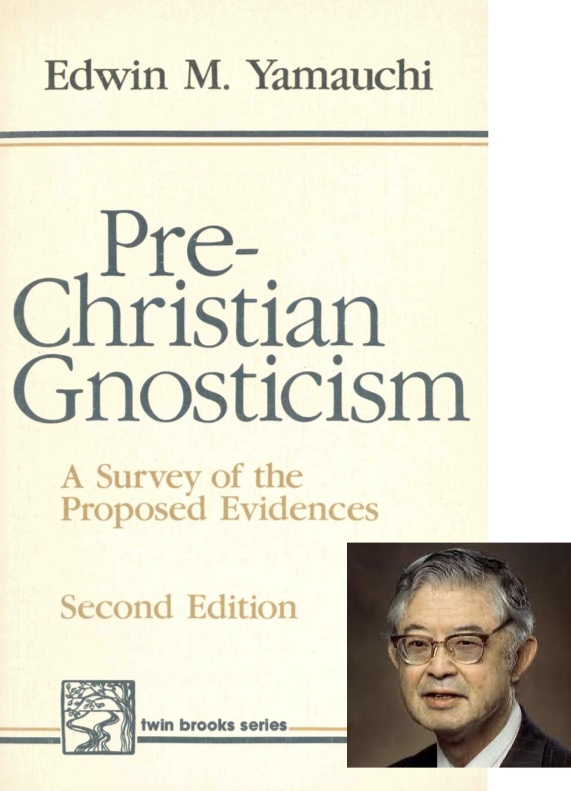This post is a sequel to Not Finding the First Jesus, Look for the Last. What follows assumes one has read that post.
It is the orthodox view that Jesus came in order to fulfil the Jewish Scriptures, but he did so in a manner that defied the expectation that the messiah would conquer the enemies of the Judeans. I have suggested that this view of Jesus arose in a wider context of ideas whereby a Jesus or Saviour figure came to overthrow the works of the Old Testament creator and lawgiver god.
My view is built on Nina Livesey’s argument for Paul’s letters being produced by one of the several “Christian schools” that existed in Rome in the second century. As I pointed out in my previous post, I have found it difficult to understand how the kinds of teachings we associate with “gnosticism” — arguing that Jesus did not have a flesh and blood body, that the Jewish god was evil, that creation itself was evil — arose from what we know of our gospels and letters of Paul. But as per my previous post, I think that the relationship between those “gnostic” ideas and the ideas of orthodox Christianity makes sense if we set orthodoxy as the latecomer.
As Livesey points out, Paul’s letters, arguably critical of “Judaism”, arose at a time when Jews or Judeans were seen as having caused horrific losses to Roman military power in the Bar Kochba war of 132-135 CE and were themselves being severely punished. I would extend the time when Jews (and Jewishness) were widely abhored to the decades before when under the emperor Trajan there were widespread Judean revolts and massacres throughout the eastern part of the empire. (One might compare the widespread loathing of the “troublous” Palestinians – and Muslims – in Israel and the West today.) This was also the time when we see the emergence of “gnostic” or similar types of teachings arguing that the Jewish Scriptures testified to an ignorant (or even evil) god whose rule only promised death.
 But there is an argument that “gnosticism” emerged after Christianity. This argument denies that there was any kind of Jewish gnosticism before the gospels and letters of Paul. Edwin Yamauchi pointed out…
But there is an argument that “gnosticism” emerged after Christianity. This argument denies that there was any kind of Jewish gnosticism before the gospels and letters of Paul. Edwin Yamauchi pointed out…
A major difficulty in accepting a Jewish origin for Gnosticism is to account for the anti-Jewish use which most Gnostics seem to have made of these elements. The anticosmic attitude of the Gnostics contradicts the Jewish belief that God created the world and declared it good. . . .
Many scholars therefore believe that it was probably through the mediation of Christianity that these Jewish elements came to be used in such an antithetical way. (Yamauchi, Pre-Christian Gnosticism: A Survey of the Evidences, 2nd ed, p. 242f)
Then a few pages later,
Gnosticism with a fully articulated theology, cosmology, anthropology, and soteriology cannot be discerned clearly until the post-Christian era. According to Wilson, were we to adopt the programmatic definition of Jonas ‘then we must probably wait for the second century’. Hengel would concur: ‘Gnosticism is first visible as a spiritual movement at the end of the first century AD at the earliest and only develops fully in the second century.’ (p. 245)
Both of these objections fall by the wayside if we place the whole game in the second century. Anti-Jewish ideas are readily understandable in a world that saw Jews as hostile to humanity “and the gods” and deserving of the bloodshed they were suffering. That is, in the times of Trajan (110s) and Hadrian (130s).
The second objection cited above expresses the point I am making: that yes, we are looking at second century developments.
It is not altogether coincidental that scholars who assume a Gnostic background for New Testament documents in some cases also adopt very late dates for these books, because late dates for these documents would make a stronger case for affinities with Gnosticism. Thus Rudolph dates Colossians to AD 80, Ephesians to the end of the first century, and both the Pastoral and the Johannine Epistles to the beginning of the second century. Koester dates the Pastorals to as late as between AD 120 and AD 160. (pp. 192f)
And why does Koester date the Pastorals to the middle of the second century? In large part because it is believed that it would have taken decades for Paul’s first century church assemblies to have evolved into the authoritarian episcopal structures that those letters indicate. But as Livesey has pointed out in her recent book, the “home gathering” situations of the letters is a rhetorical device aimed at building a sense of community among readers. They are not documenting a historical situation.
There is no independent evidence that dates any of our New Testament writings earlier than the middle of the second century. Yamauchi acknowledges that a second century date for the gospels and letters would make the possibility of a “pre-Christian” gnosticism more likely. I think the argument goes beyond mere chronological ordering of sources, though. That returns me to the point I was making in my previous post.
In coming posts I may (as much for my own benefit as anyone else’s) post notes on various teachers who appear to me to have preceded (proto-)orthodox Christianity and whose followers appear to have engaged with the new gospels and Pauline writings.
